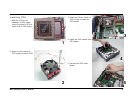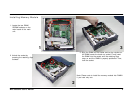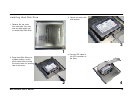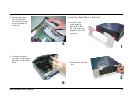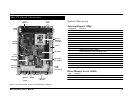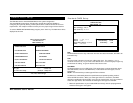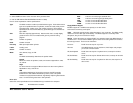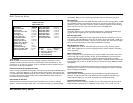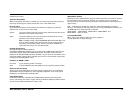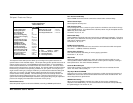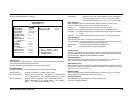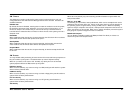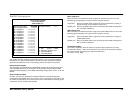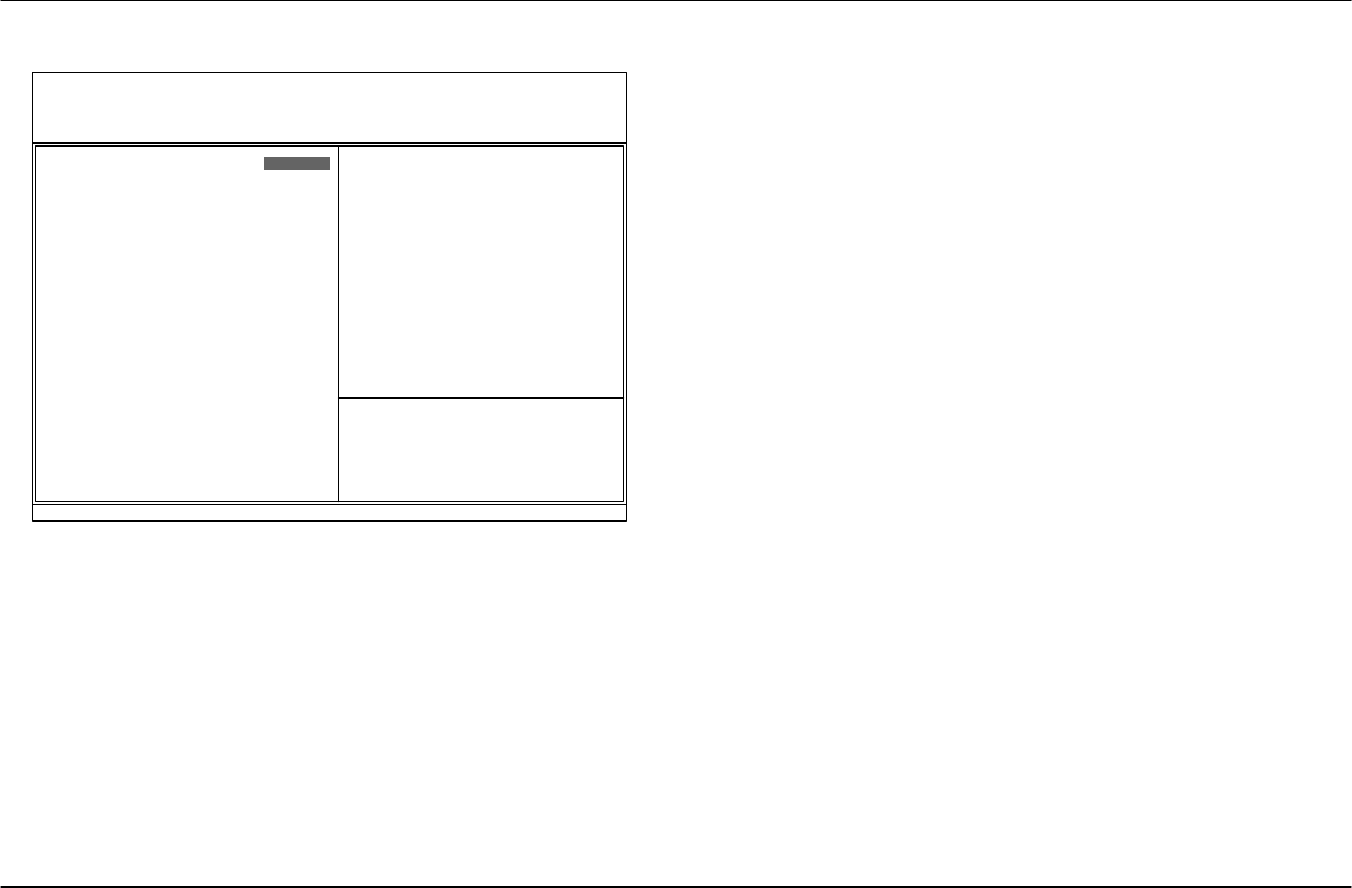
16BPC-500-5820 User's Manual
quick POST. Better to find a problem during POST than lose data during your work.
Boot Sequence
The original IBM PCs loaded the DOS operating system from drive A (floppy disk), so IBM
PC-compatible systems are designed to search for an operating system first on drive A,
and then on drive C (hard disk). However, modern computers usually load the operating
system from the hard drive, and may even load it from a CD-ROM drive.
Swap Floppy Drive
This field is effective only in systems with two floppy drives. Selecting Enabled assigns
physical drive B to logical drive A, and physical drive A to logical drive B.
Boot Up Floppy Seek
When Enabled, the BIOS tests (seeks) floppy drives to determine whether they have 40
or 80 tracks. Only 360-KB floppy drives have 40 tracks; drives with 720 KB, 1.2 MB, and
1.44 MB capacity all have 80 tracks. Because very few modern PCs have 40-track floppy
drives, we recommend that you set this field to Disabled to save time.
Boot Up NumLock Status
Toggle between On or Off to control the state of the NumLock key when the system
boots. When toggled On, the numeric keypad generates numbers instead of controlling
cursor operations.
Memory Parity Check
Parity is a measure of the consistency of your system's RAM, memory chips. Plus, there
is both parity and non-parity memory. At boot, the Award BIOS both sizes and tests all
memory. Normally, when a parity error is detected, the BIOS will display a message
describing the problem as well as the problem's location, if possible. The boot process will
then terminate and you will not be able to continue until the bad chip or SIMM is located
and replaced.
Disabling the Memory Parity Check allows the system to by-pass the test and allow your
system to boot. You then have a choice of continuing to operate your system or attempt-
ing the remedying the problem.
Typematic Rate Setting
When Disabled, the following two items (Typematic Rate and Typematic Delay) are
irrelevant. Keystrokes repeat at a rate determined by the keyboard controller in your
system. When Enabled, you can select a typematic rate and typematic delay.
Typematic Rate (Chars/Sec)
When the typematic rate setting is enabled, you can select a typematic rate (the rate at
which character repeats when you hold down a key) of 6, 8, 10,12, 15, 20, 24 or 30
BIOS Features Setup
ROM PCI/ISA BIOS (2A5IMTPD)
STANDARD CMOS SETUP
AWARD SOFTWARE, INC.
Esc: Quit
↑ ↓ → ←
: Select Item
F1 : Help PU/PD/+/- : Modify
F5 : Old Values (Shift)F2: Color
F6 : Load BIOS Defaults
F7 : Load Setup Defaults
Virus Warning : Disabled
CPU Internal Cache : Enabled
External Cache : Enabled
Quick Power On Self Test : Disabled
Boot Sequence : A,C,SCSI
Swap Floppy Drive : Disabled
Boot Up Floppy Seek : Enabled
Boot Up NumLock Status : On
Memory Parity Check : Disabled
Typematic Rate Setting : Disabled
Typematic Rate (Char/Sec) : 6
Typematic Delay (Msec) : 250
Security Option : Setup
PCI/VGA Palette Snoop : Disabled
OS Select for DRAM > 64MB : Non-OS2
Report No FDD For Win95 : Yes
Video BIOS Shadow : Enabled
C8000-CBFFF Shadow : Disabled
CC000-CFFFF Shadow : Disabled
D0000-D3FFF Shadow : Disabled
D4000-D7FFF Shadow : Disabled
D8000-DBFFF Shadow : Disabled
DC000-DFFFF Shadow : Disabled
Cyrix 6x86/MII CPUID : Enabled
Virus Warning
When enabled, you receive a warning message if a program (specifically, a virus)
attempts to write to the boot sector or the partition table of the hard disk drive. You
should then run an anti-virus program. Keep in mind that this feature protects only the
boot sector, not the entire hard drive.
CPU Internal Cache & CPU External Cache
Cache memory is additional memory that is much faster than conventional DRAM (system
memory). CPUs from 486-type on up contain internal cache memory, and most, but not
all, modern PCs have additional (external) cache memory. When the CPU requests data,
the system transfers the requested data from the main DRAM into cache memory, for
even faster access by the CPU.
Quick Power On Self Test
Select Enabled to reduce the amount of time required to run the power-on self-test
(POST). A quick POST skips certain steps. We recommend that you normally disable



